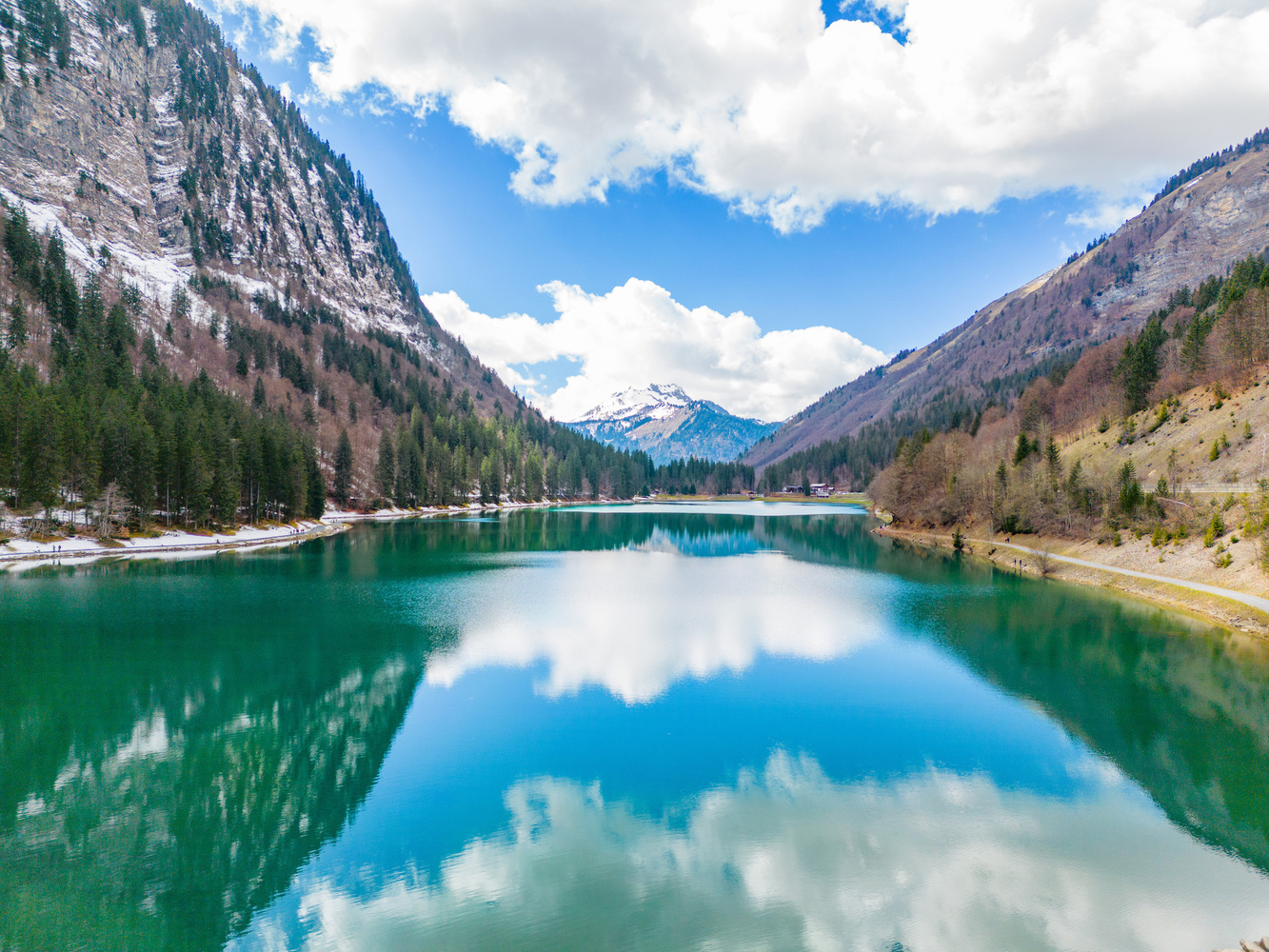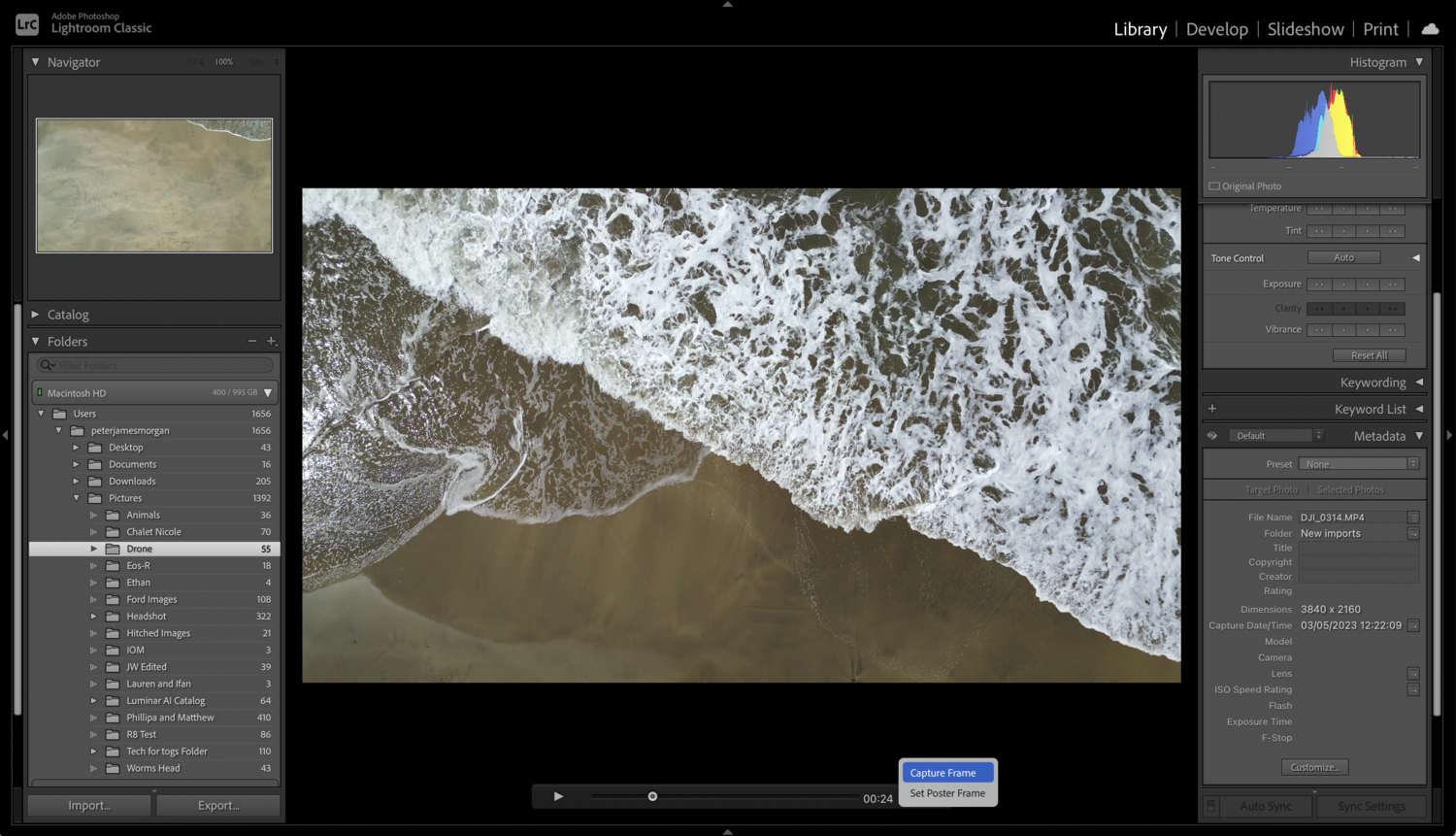Drone photography is becoming increasingly popular for landscape photographers and for good reason. Drones offer a unique perspective of the world we live in that can be used to capture stunning landscape imagery. If you're new to drone photography or if you're looking to improve your skills, here are 10 tips to help you take stunning landscape photos with your drone alongside equipment and accessories to consider.
1. Plan Your Shots
Before you take off, take some time to plan your shots. Check local laws and restrictions (you can use the app Airmap to check this information). Look for interesting angles and compositions, and think about how you want to use the landscape to create a visually appealing image. Also, look at images that have been taken before so as not to copy what's already been done. There's nothing worse than getting the same image as 20 or so other photographers when you can create something new and exciting.

2. Use the Right Settings
Your drone's camera has a number of configurable settings that can affect the quality of your photos. Make sure you understand how these settings work well before time so as to maximize the battery life and your time in the air and how to use them to your advantage to get the shot you want. Choose the right shutter speed, ISO, and f-stop. Also, DJI drones have several options that include HDR mode, Panoramic, etc. Use these to your advantage. Where possible, save your settings to a profile so you can load that in rather than changing every setting while the drone is in the air.

3. Shoot in Raw Format
The raw file format gives you more control over the editing process, so it's a good idea to shoot in raw whenever possible. JPEG is a lossy format, so you're always going to get a compressed image, which is fine if the photos are going to stay on your phone, but if, like me, you want to print your images, then raw will give you the highest quality possible with the greatest and widest possibility for editing and adjustments.

4. Be Patient and Aware
Be patient, but also be aware of your time in the air and battery life. Don't be afraid to experiment and take your time if you have spare batteries. The best drone photos often come from patience and perseverance. Sunset and sunrise shots are literally about turning up and waiting.
5. Be Safe and Legal
Always fly your drone in a safe and responsible manner. Follow all the rules and regulations for drone flying in your area. If you are planning on selling your images, make sure you have the correct license for your country. Basic information in the UK can be found on the CAA's website here. You will need to register a flyer and a pilot ID. It is against the law to fly a drone or model aircraft without having the required IDs. You can also be fined for breaking the law when flying. In the most serious cases, you could be sent to prison (although this very rarely happens unless it's the most serious breach of regulations).

6. Get the Right Equipment
I own two drones. I have the DJI Mini 3 Pro with DJI RC Remote & Fly More Kit Plus, which is excellent for most situations, as you don't need a commercial license to fly this in the UK, though it does need to be registered with the CAA. I also own a DJI Mavic 2 Pro Drone Quadcopter UAV with Smart Controller, which is still a lovely drone and, as a fully licensed pilot, I use it for most commercial jobs that require a better camera and more options for planning and in higher wind speeds. I also have the DJI Neutral Density Filter Set for Mini 3 Pro and the DJI Mini 3 Pro Wide Angle Lens, plus extra batteries for everything.
7. Shoot Video, Then Grab Stills
Shooting video with the camera can get you great shots that you might otherwise miss. Think about the time it takes to react to what's going on and then taking the shot versus having the drone in the air and filming and grabbing a still from the video. It's also very easy in Adobe Lightroom. You just move the clip to the point you want, click to the right of the scrubbing bar, and choose Capture frame.

Here's the grabbed sho,t for example:

8. Share Your Photos
Once you've taken some great drone photos, don't forget to share them with the world! Post them on your social media channels, enter them into photography contests, or even print them out and hang them on your wall. DJI's app has a place where you can upload your favorite images for everyone to see, rate, and comment on, and most photography competitions have a drone or aerial category now.

9. Remember to Have Fun
Drone photography is a great way to get creative and explore the world from a new perspective. So, get out there and start flying! Try the goggles too. It's freaky and really exciting to be able to see the world as if you're flying a plane or helicopter. Check out the DJI Avata Pro-View Combo with RC Motion 2. It's an awesome way to get into FPV flying (first person view).
10. Learn From Others
There are many great resources available to help you learn more about drone photography. Check out online tutorials, read photography magazines, and follow other drone photographers on social media. Mr. MPW is a great resource and can be found online here.
Following these tips, you can take stunning landscape photos with your drone. So, what are you waiting for? Get out there and start flying!






